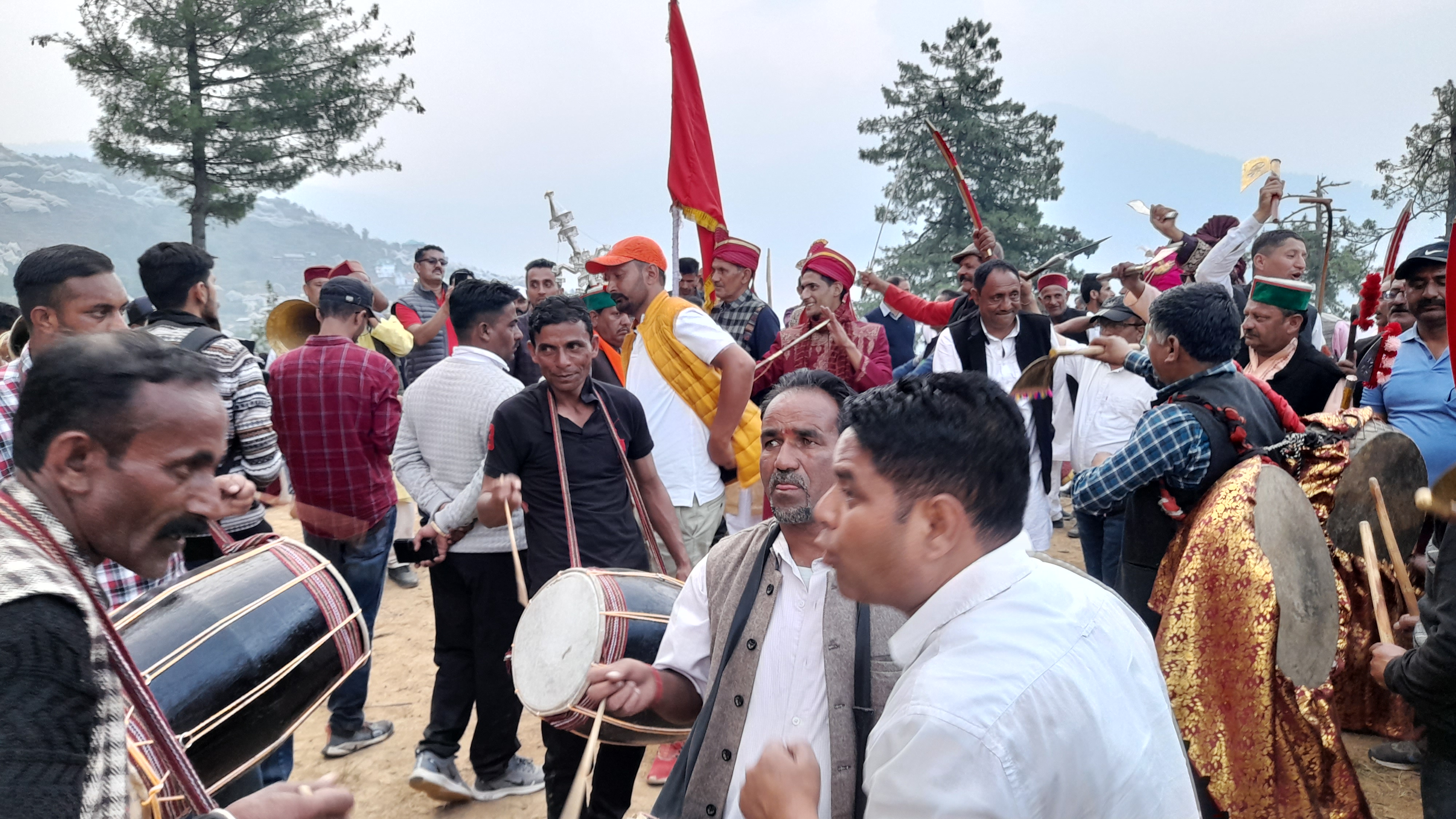BAMTA/SHANTHA: Amid the gliding beats of Thathauyer, Bishu Jubbarh of Bamta turned into a “Kurukshetra” of Chatra hills on May 28-29. Bishu of Bamta brought alive the "Feud legend" of Paanshi Badhaan Khoond of Shantha and Shaathi Basain Khoond of Pundar after a gap of 20 years.
Thousands of people including women, children and stall vendors from the region enjoyed the festivities. Locals came out in large number from their long isolation of Corona pandemic to enjoy Bishu at Lani Bamta Jubbarh in Chopal tehsil of Shimla district.
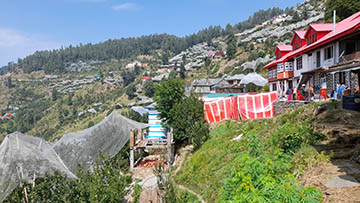
They became witness to unique Thotha, a game of archery, Bow and Arrow (Dhanu-Shari) or Tir-Andazi that brought alive the symbolic “feud” between the Pandav(Paanshi) Rajput of Shantha and Kaurav(Shaathi) Rajputs of Jubbarh-Makroag Pundar.
Both the legendary rivals converged to the Jubbarh after a long ceremonial journey that starts all the way from their respective villages. 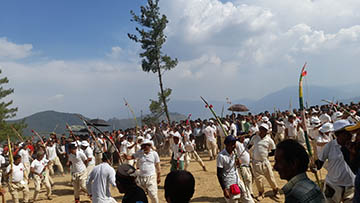
No doubt, old traditional Bishu fervour has changed dramatically in the Hills due to the spread of network of roads, mass media, health and education and prosperity brought about by apple economy.
Pahari Bishu Culture is Still Alive and Kicking
But still Bishu continues to maintain its traditional fervour and appeal even among the educated youth and millennials, who also came calling back homes from big cities to their villages, taking torch of tradition and Bishu culture high. It is a good sign that apple prosperity has kept Pahari culture alive and kicking. 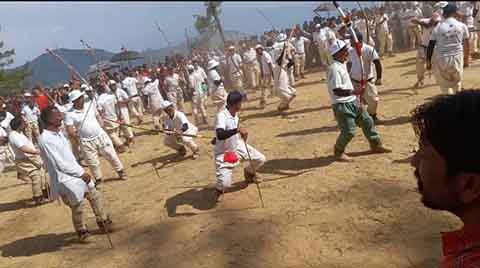
In Shantha village, Badhaan first assemble at the premises of Kali temple dedicated to the Devi Thaur or Shatbahi, the goddess of 6 arms. Kul Devta, present, who along with the Devi, protect villagers, leads and decides common issues related to the Badhaan Biradari.
Oracle Session at Shantha, Hastinapur of Pandav
Before Badhaan proceed, they first cook Halwa (Prasad) and sacrifice it to the Devi, invoking Her to protect them. The oracle session follows. Gurs of Devta and Devi are in trance, in direct contact with Devi and Devta and instruct the villagers.
All is set for the journey. Bajantris, traditional musicians, play Thathauyer as soon as first Mihala (dynamite) is exploded at the corner of temple premises, with its impact resounding the entire valley.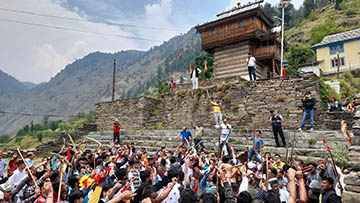
Gurs enter sanctum of the temple and come out in divine “avatar”, blessing the entire Thathauryer so that they come back safe, trouncing the rivals.
It is believed that the ‘Mihala’ drives away all evil spells and spirits and sound an alert to rivals that Badhaan are coming and that they are armed in military fatigues like Dangra, Talwar, sticks and an armory of dynamites.
As soon as dynamite sound goes away, there follows first Haush, a war slogan of Bishu, challenging the rival Basain.
As per tradition this first Haush is made by Masta, who comes from dalit community and rest of Badhaan fraternity joins the frenzy of Thathauyer.
The dancing Thathauyer procession inches ahead slowly and slowly in the temple premises of Shantha, a village hailed as Hastinapur, the capital of Pandav.
Haush after Haush follow, charging up Panshi Badhaan brigade. They dance their ways on, challenging the rival Shaathi amid thunder, pointing their Dangra, sword, Dhanu and Shari (Bow and Arrows) in the air to show their power.
Representing Thaur, pujari Shamlal and purohits Suresh Pandit and Sandeep Pandit carry symbols of Devi, Dhanu (Bow) and accompany Badhaan procession to the venue of Bishu.
On the other hand, Basain also assemble in the premises of their Devi temple in Makroag. They also invoke similar rituals, challenging their rival Badhaan.
After two hours long journey, both the rivals arrive at the Bishu Jubbarh one after the other amid the sounds and slogans of Thathauyer, claiming their superiority over the other.
Dancing their Dangra, Dhanu, swords and sticks in the air, first to arrive at the Maidan are Basain. They enter Bishu Jubbarh, dancing and challenging Badhaan with a burst of Haush, terming them as “useless match for them to play Thotha with”.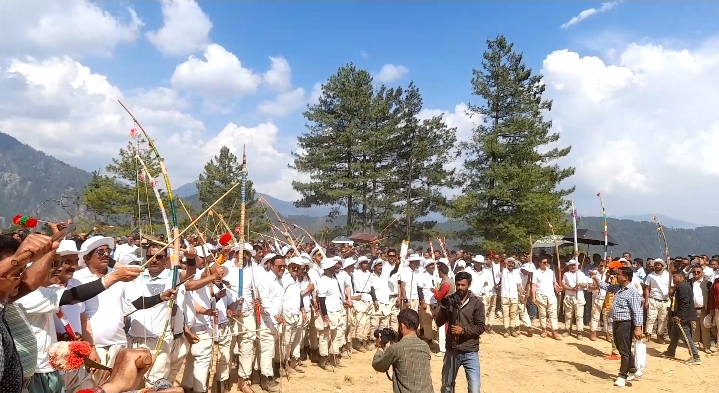
They are welcomed at the venue by the Bamta villagers, the host, who have invited both Basain and Badhaan for Bishu to play Thotha in their Jubbarh.
Last to enter in this ‘Kurukshetra’ are Badhaan.
Dancing to the slow gliding traditional Nati songs, Badhaan Thothauryer also enters Jubbarh with same show of strength and hoots of Haush, calling their rivals as “Lipru”, who are no match for power of Panshi Badhaan to play Thotha.
They also are welcomed by the host villagers of Bamta--Jhagtas, Primtas, Raptas, Dhobtas and the like-- with same warmth and pat their back for putting up a good show.
Panshi and Shaathi processions come to rest in the middle of the Jubbarh, with both the rivals doing the rounds of the Thotha ground with swift Chitku Nati to show their energy and power.
Khoonds then get ready for Thotha game. They dress up wearing Suthan(thick, stuffed pyjama) and shirt and other fatigues for this game that bring alive age-old Paasnhi-Shaathi feud, something that brings to mind “Kurukshetra” of Pandav and Kaurav fame.
Armed with Dhanu and Shari (bow and arrow) they enter the Kurukeshtra or Ranbhumi to prove their Thotha prowess over their respective rivals.
It is a rustic detour to the legendary 'Kurukshetra". Watching all this are not only thousands of people, but also the devis of each Khoond, whose symbols are kept on the higher spot of the Jubbarh where they can watch the “epic play between Paanhsi and Shaathi, says Prem Pal Jhagta, Nambardar of the village.
It is a marvelous convergence of people and their devis at this "Kurukshetra". It is believed that the devis and devta are also part and parcel of the Bishu festivities.
Both the invited rivals come face to face in the middle of the Bishu Jubbarh, with thousands of people watching the friendly traditional "feud sport" with bated breath.
“I have never seen festivities like this anywhere in India and abroad”, says Mehak, fiancée of Rajat Talwar, a famed model and actor. Both had come from Chandigarh, while Mehak comes from the USA, Rajat has come at his Mamu’s house, Balbir Jhagta to see Bishu that took place after 20 years.
“I Never knew people are so deeply concerned and have fellow feelings with each other here. Pahari Nati, archery and festivities have made a lasting impression in my mind, which I will never forget”, Mehak exclaims. 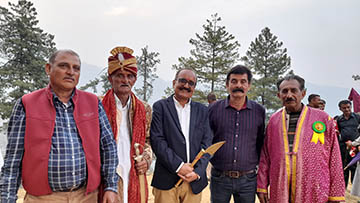
After they come face to face, Khoonds choose their respective rivals, keeping age, physical strength and seniority in mind. And this is how Thotha begins among rivals. Thathaur make loud Haush hoot, belittling his rival, even bringing their Dada Pardada into play, each time they hit the targeted spot on back of lower leg with an arrow. 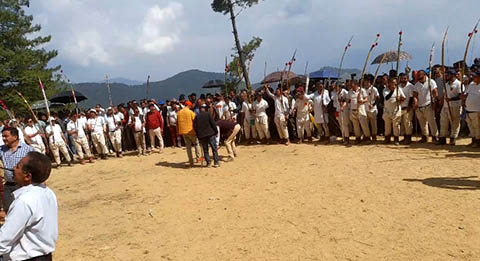
As a rule of the game, an ace Thothauri is one who strikes his arrow right in the middle of back of lower legs between lower knee and ankle of his rival. The one who misses this spot is treated with disdain (Kalandi). If anyone hits above the knee, his rival is at liberty to boycott him and he is ridiculed by all good Thothauris.
Taking their Tir-Kamaan skyward, each rival stretches his Dhanu to his fullest strength and aims his arrow at the middle of the back of lower legs of his rival, who also makes swift tricks, shaking his legs (Rool) to doze his aim.
The lower legs till thigh are protected by the thick layer of stuffed Suthan to avoid injury as a blow of arrow sometime can be fatal, says Umesh Banchaik, village Nambardar of Shantha, who also played Thotha and scored his blows against his Basain rival.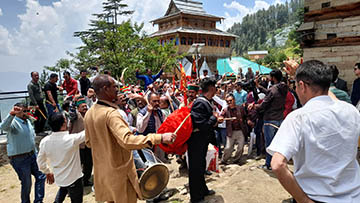
Thotha goes on for a couple of hours amid the rustic music of Thathauyir. The game is then called off and guests stay back for the night halt. They are distributed evenly in the village so that no single family is overburdened to entertain them.
In fact, Bish is held when the villagers are convinced that they would harvest good crop. This year, the valley expects a good crop. "Whom to invite", it is a mutual cultural exchange.
The festivities begin next day with same verve and spirit. After Thotha play is over, the host perform the nati, bidding farewell to the Khoond guests. The procession along with Devis go back to their respective villages in their vehicles.
Old Rivalries Turn into New Bonds
The legend of Paanshi-Shaathi feud dates back to the yore when there existed rivalries among clans over possession of territories and marrying women mainly in the erstwhile Mahasu Janpad.
Some scholars say it dates back to the epic age of Pandav and Kaurav, who have also believed to have wandered in the Himalayan region, leaving behind symbols of temples and this tradition.
That’s why Khoond trace their lineage to Paanshi and Shaathi Rajputs with its origins dating back to Mahabharat times. Later in middle ages and after, local feudal lords tried their best to sharpen rivalries among the Khoond by fueling “Bair” (feud/rivalry) that at times used to result in bloody feuds.
But things have changed long back. Old feuds have turned into friendly cultural ties and relations due to cross marriages among them. Thotha and Bishu have come out in new avatar.
Bishu of Bamta came as a much-sought relief for locals after corona pandemic and gave them a much-needed release, says Balbir Jhagta, a senior village Nambardar and a renowned advocate of Chopal.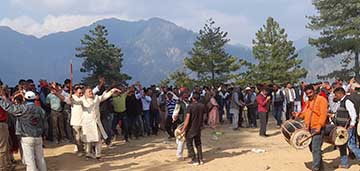
“Bishu keeps our culture alive. It cements ties of brotherhood and brings relatives and families together”, he says.
Bishu also brought good business to stall owners, see-saw spring operators who have come from the plains. They did brisk business, selling their consumer products, toys, bangles, garments, utensils, sweets and fruits and the like to thousands of visitors. Bamta Bishu turned out be a big rejuvenator for all reviving culture among newer generation, whose active participation was legendary.




